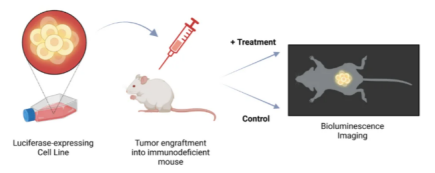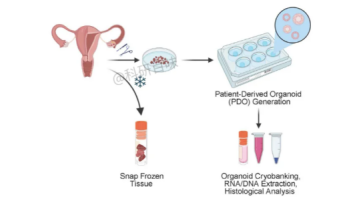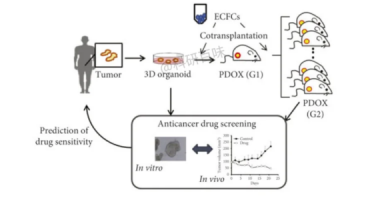Please click the button below to go to our email login page
|
5 common tumor models and their featuresDuring clinical research and drug research and development, we often use animal models to evaluate the in vivo efficacy of the investigational drug. Today, let’s combine pictures and text to explore the differences among various tumor models together!
1. CDX (Patient-derived tumor cell lines)
Brief introduction: a tumor model constructed by transplanting human or mouse derived tumor cell lines cultured in vitro into immunodeficient mice. Advantages: short modeling time, good reproducibility, low cost, etc. Disadvantages: after long-term in vitro passage, the heterogeneity of the cell line gradually decreases, and its effectiveness in predicting clinical efficacy is suboptimal. Application scenarios: oncology research and development of anti-tumor drugs.
2. PDX (Patient-derived xenotransplantation)
Brief introduction: a transplant tumor model formed by implanting patients-derived tumor tissue and primary cells into immunodeficient mice. Advantages: preserved tumor heterogeneity; over 90% tumor similarity of the patient; ability to reflect differences of samples from different tumor sources. Disadvantages: high modeling difficulty, high cost, long construction time, and unstable success rate; a certain limit on the number of passages, and inability to screen immune related drugs. Application scenarios: evaluation of the clinical efficacy of drugs, drug screening, tumor biology, chemotherapy drug sensitivity and resistance marker screening.
3. PDO (Patient-derived tumor organoids)
Brief introduction: as a three-dimensional multicellular structure, it is a tumor model that can amplify and preserve the genotype and phenotype characteristics of its source tissue in vitro. Advantages: ability to preserve tumor heterogeneity, a high clinical relevance to patient tumors, and a shorter modeling time. Disadvantages: the need of complex technologies, including precise cell culture condition and source of high-quality stem cells; deficiency of vascularized structure and intact immune system. Application scenarios: drug sensitivity test, drug development, and biomarker discovery in various tumor research.
4. PDXO (PDX-derived organoids)
Brief introduction: in vitro tumor model derived from PDX model Advantages: convenient experimental operation, high tumor homology and high clinical relevance. Disadvantages: high experimental cost, difficulty in reproduction, etc Application scenarios: drug screening and drug research and development, drug efficacy research, tumor biology research, etc.
5. PDOX (Patient organoid xenotransplantation)
Brief introduction: PDX model constructed by transplanting PDO cells into immunodeficient mice. Advantages: low cost and short cycle; high preservation of the molecular markers and functional characteristics of primary tumor tissue Disadvantages: certain differences in the tumor microenvironment and three-dimensional structure compared to the original tumor tissue Application scenarios: high throughput screening of drugs, tumor biology research, preclinical research, and translational medicine.
|





